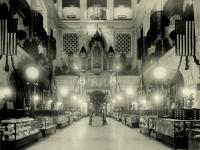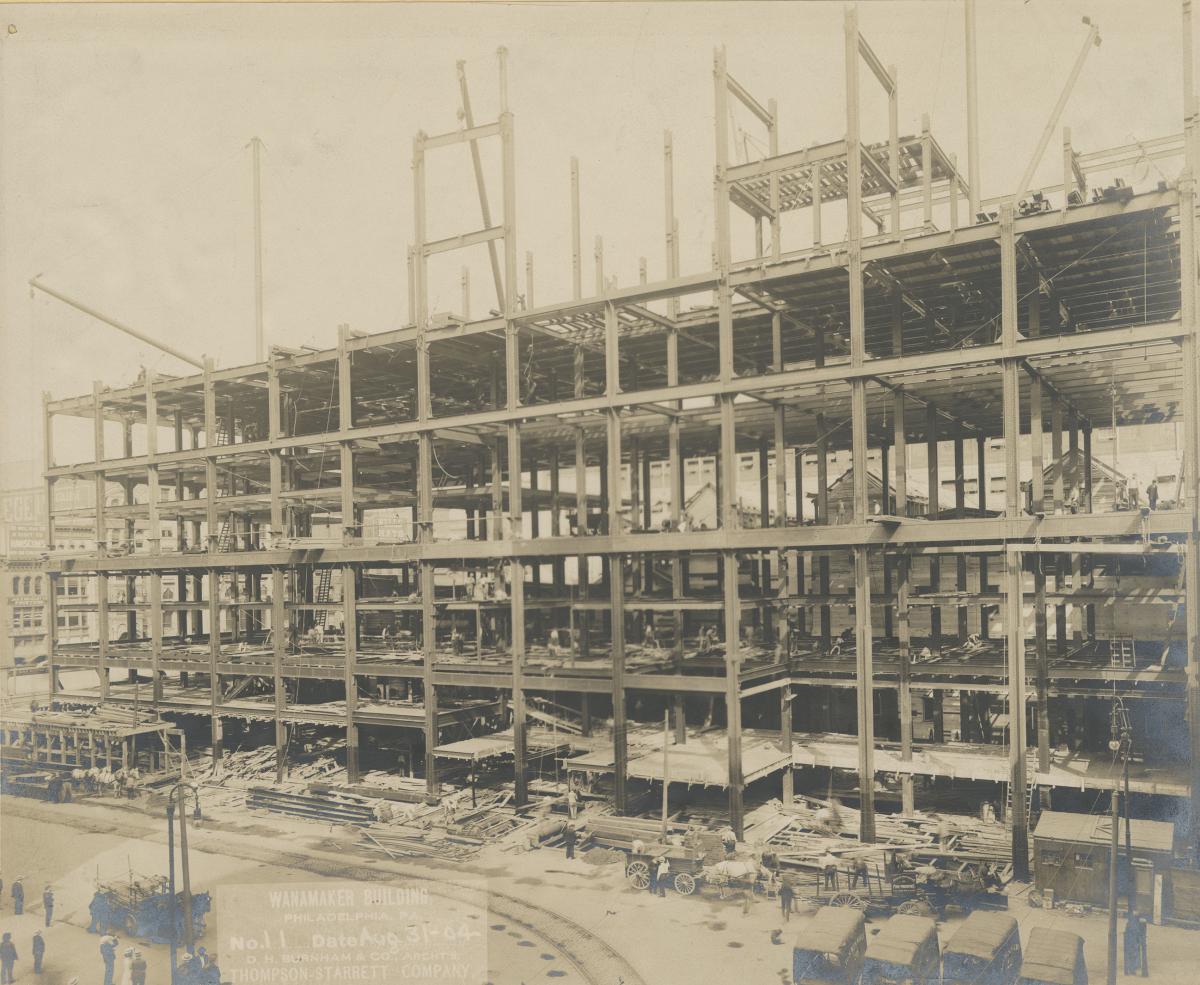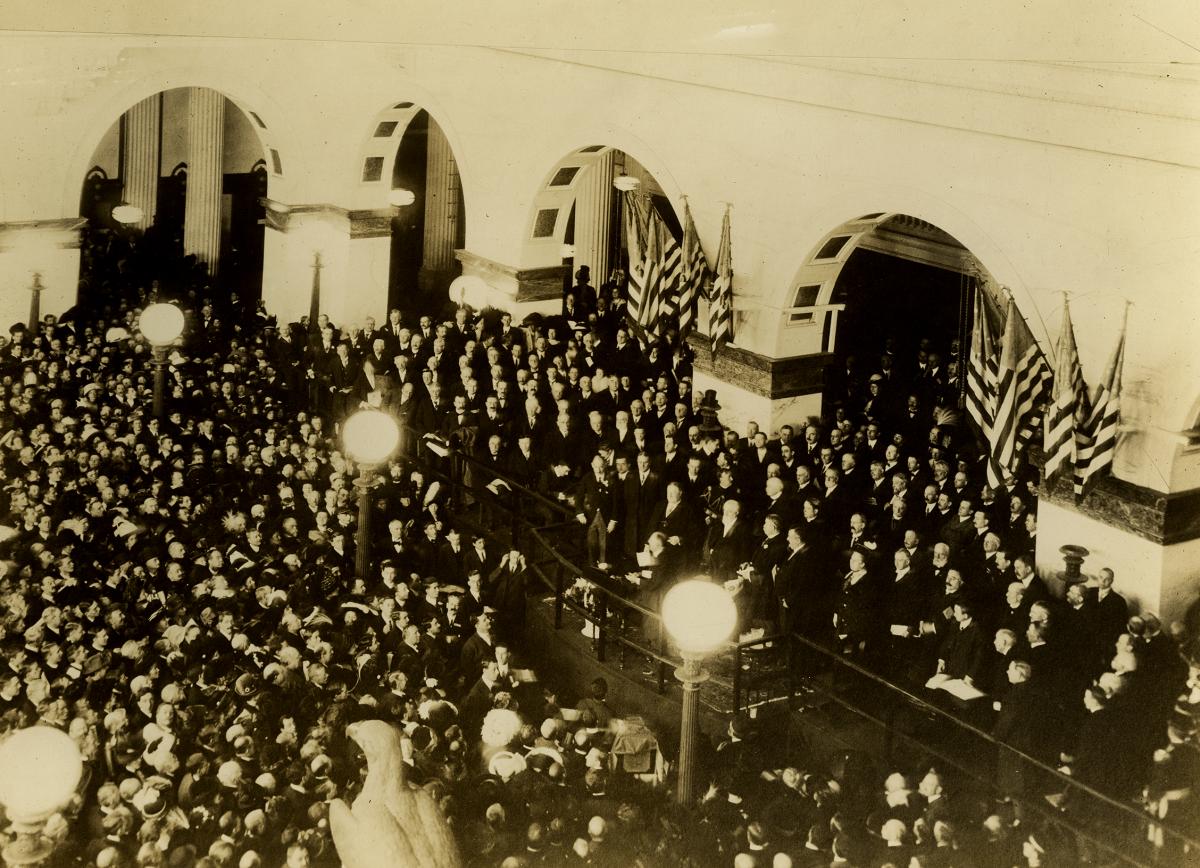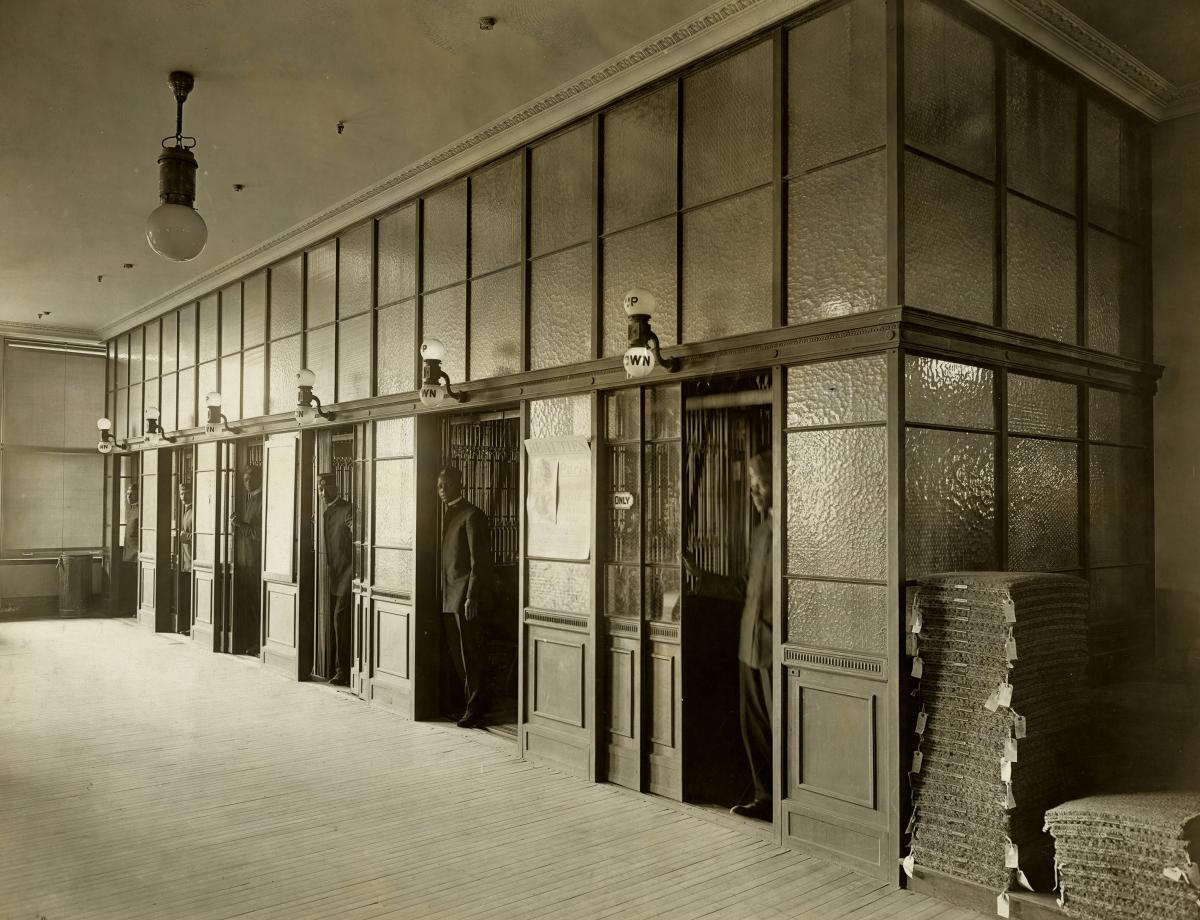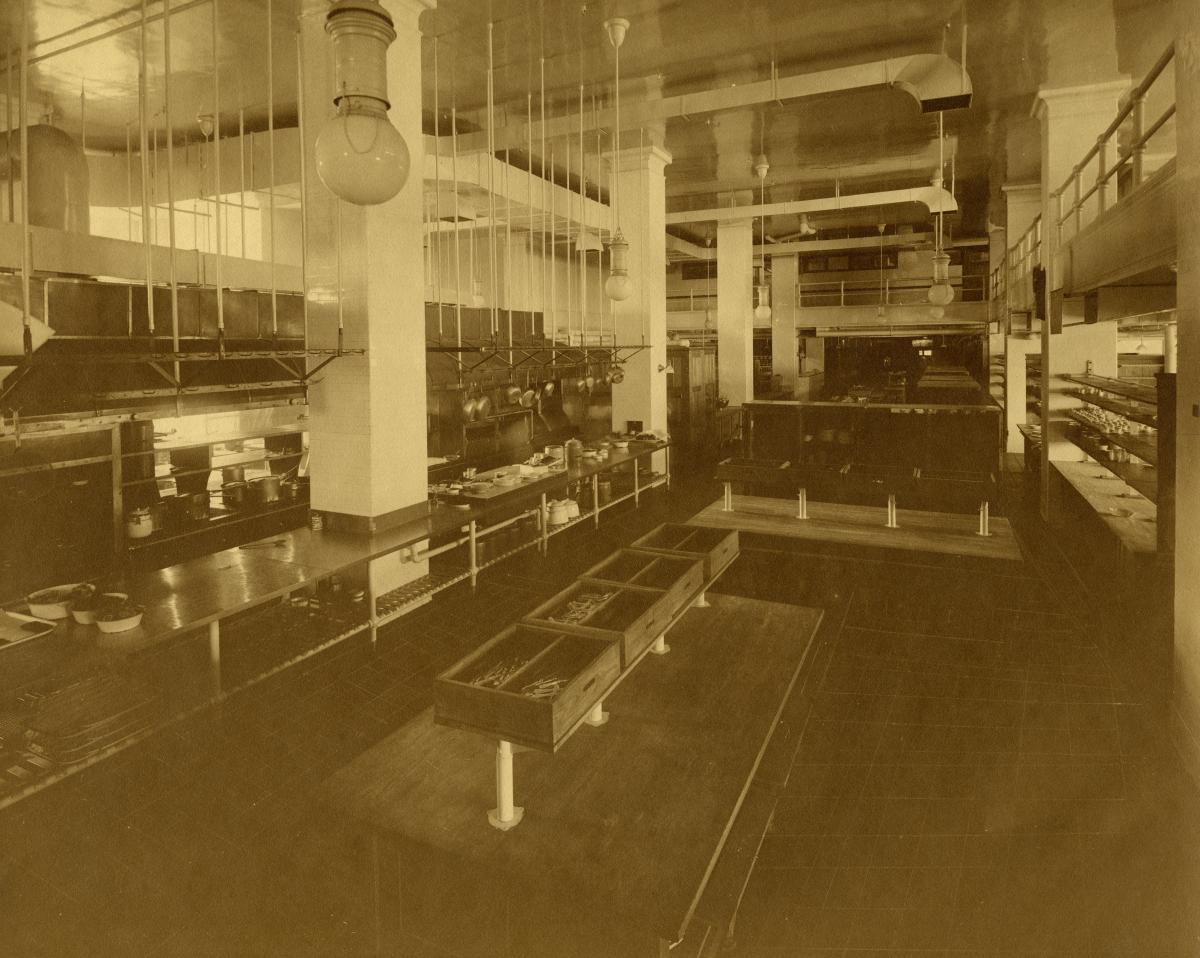This piece originally appeared in Hidden City Philadelphia on December 12, 2018.
This month, as shoppers battle crowds to buy last-minute gifts for the holidays, Macy’s in Center City celebrates six decades of presenting the annual Christmas Light Show. The beloved Philadelphia tradition boasts 100,000 lights and elaborate displays that stretch four stories high in the Wanamaker Building’s Grand Court atrium. The show began in 1956 when the structure still served as the home of its namesake department store. This summer the beautifully ornate interior of the building was finally placed on the Philadelphia Register of Historic Places for legal protection.
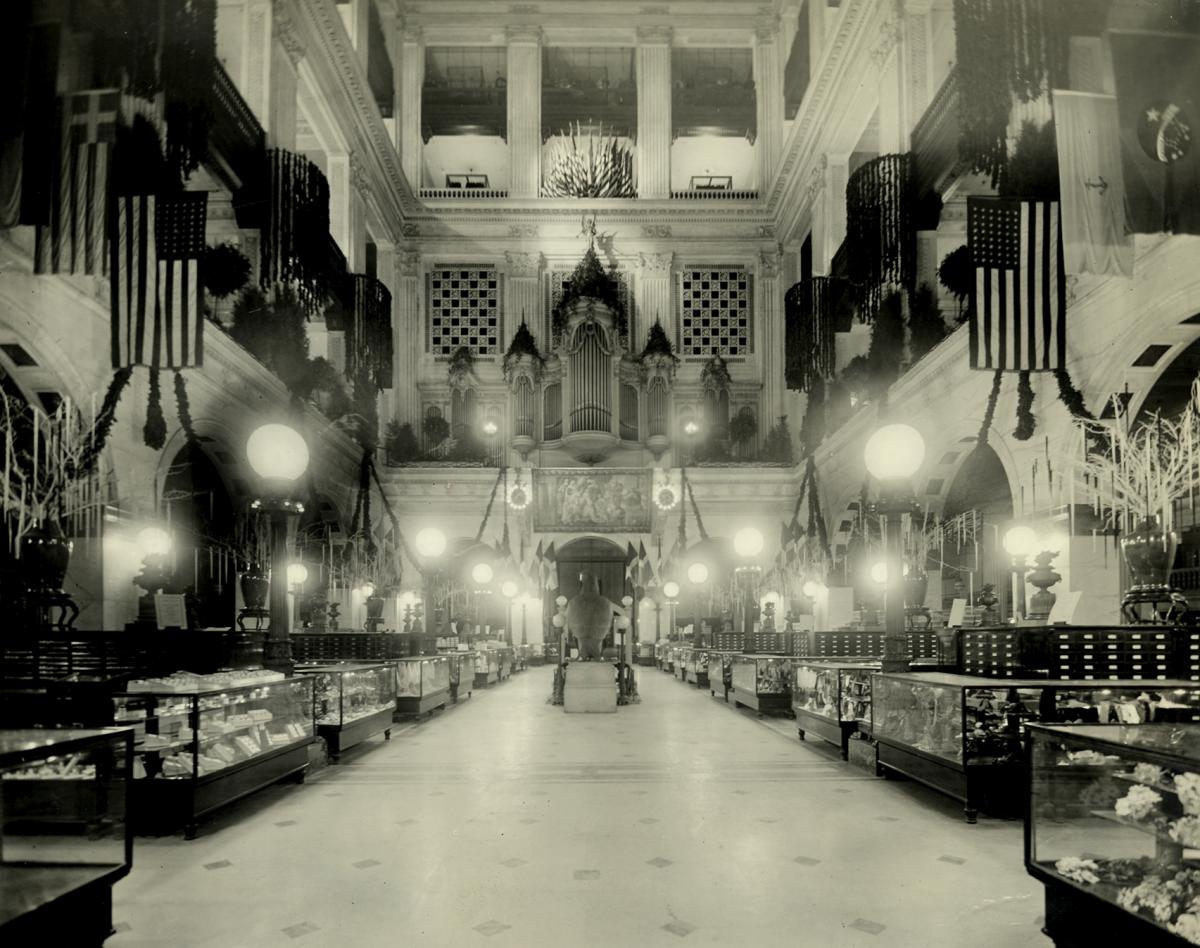
Christmas season in the Wanamaker Building. Photograph. 1920. John Wanamaker collection. Historical Society of Pennsylvania.
The Wanamaker Building opened in 1911 and was designed by architect Daniel H. Burnham in the Renaissance Revival style. It replaced the Wanamaker’s Grand Depot, which existed and operated on the same corner lot at 13th and Market Streets since 1876. The pomp and circumstance of the Wanamaker Building’s grand opening stands in stark contrast to the casual environment of most department stores today. John Wanamaker—the famed retail magnate—distributed elegantly crafted invitations to the nation’s elite, directing them to RSVP with his son Rodman. President William Howard Taft provided the evening’s keynote address.
Perhaps the lynchpin of the building’s grandeur, the famous Wanamaker organ made its debut in June of the building’s inaugural year in honor of King George V. The Wanamakers acquired the organ at the 1904 World Fair in St. Louis. Though it would take nearly two decades to reach its current size, the organ grew to include 28,482 pipes by 1930, making it the largest functioning organ in the world.
The impressive scope of the Wanamaker Building and its status as a pillar of social and commercial life in 20th century Philadelphia is further evidenced by images from the Historical Society of Pennsylvania’s archives that chronicle the store’s enormous workforce and the complex logistics behind its operation. Workers scurried around a spacious basement kitchen where they prepared food for customers enjoying an afternoon in the store’s Crystal Tea Room. Uniformed elevator operators welcomed patrons underneath detailed murals. Lines of delivery carts assembled outside the building’s facade to deliver goods across the city.
Christmas display in Wanamaker’s toy department of penguins and a tree hung with stockings. Photograph. 1930. John Wanamaker collection. Historical Society of Pennsylvania.
While the annual Christmas Light Show originated over a half century ago, Christmas festivities at the Wanamaker Building predate the 1950s. Wreaths festooned to the building’s enormous columns became a yearly fixture in the store’s first decade of operation. In one sign of how the times of changed, dramatic depictions of Jesus’ crucifixion regularly stared down shoppers as they browsed the consumer goods of the day. (John Wanamaker was a devout Christian who regularly proselytized to his workforce through educational initiatives such as his summer camp for young cashiers.)
By the 1930s, staff began setting up elaborate winter displays for the holidays, including snowy landscapes populated with penguins and figures from popular Christmastime stories.
Debuting in 1946, the building’s iconic monorail became a fixture of the holidays, enthralling young Philadelphians. Hanging down from the building’s 8th floor and whisking back and forth through the Wanamaker Building’s expansive atrium, the monorail showcased the store’s newest stock of toys.
While enchanting generations of Philadelphians through holiday cheer, the Wanamaker Building’s history of Christmas-themed celebrations have always been fundamentally connected to the commercial endeavor of driving sales.
Photograph taken during the construction of the Wanamaker store at 13th and Market Streets in August 1904. The photograph, taken by D.H. Burnham & Co., Architects, shows the exposed frame of the building and construction materials, as well as workers and horse and buggies on the street. Photograph. 1904. John Wanamaker collection. Historical Society of Pennsylvania.
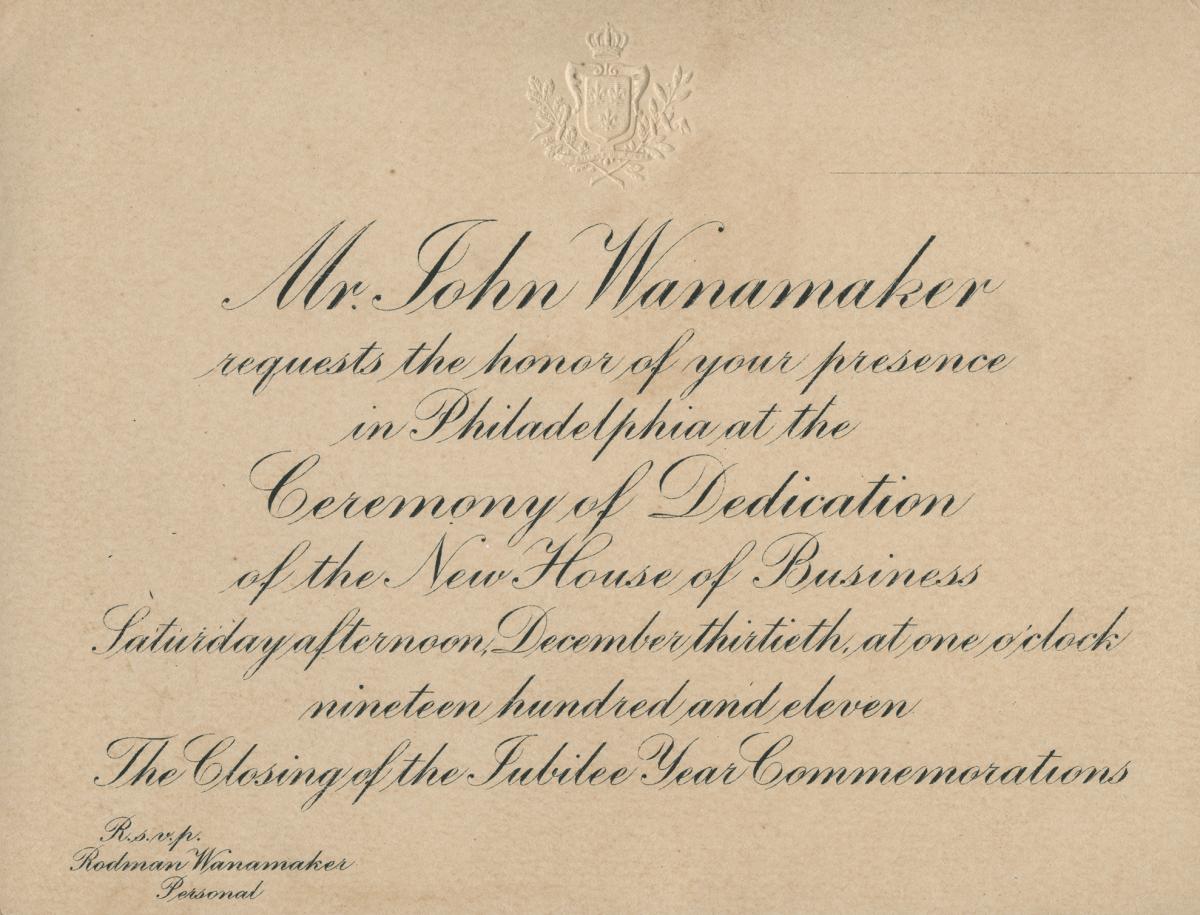
Invitation to the dedication of the new Wanamaker store on December 30, 1911. Ephemera. John Wanamaker collection. Historical Society of Pennsylvania.
Photograph of President William Howard Taft addressing a large audience at Wanamaker’s store dedication. The building’s famous eagle statue can be seen in the foreground. Photo-graph. 1911. John Wanamaker collection. Historical Society of Pennsylvania.
Early Ford delivery trucks lined up on 13th Street outside the Wanamaker Building. Undated. John Wanamaker collection. Historical Society of Pennsylvania.
Elevator hall inside the Wanamaker Building. Photograph. Undated. John Wanamaker collec-tion. Historical Society of Pennsylvania.
Wanamaker Building’s industrial kitchen. Photograph. Circa 1940. John Wanamaker collection. Historical Society of Pennsylvania.
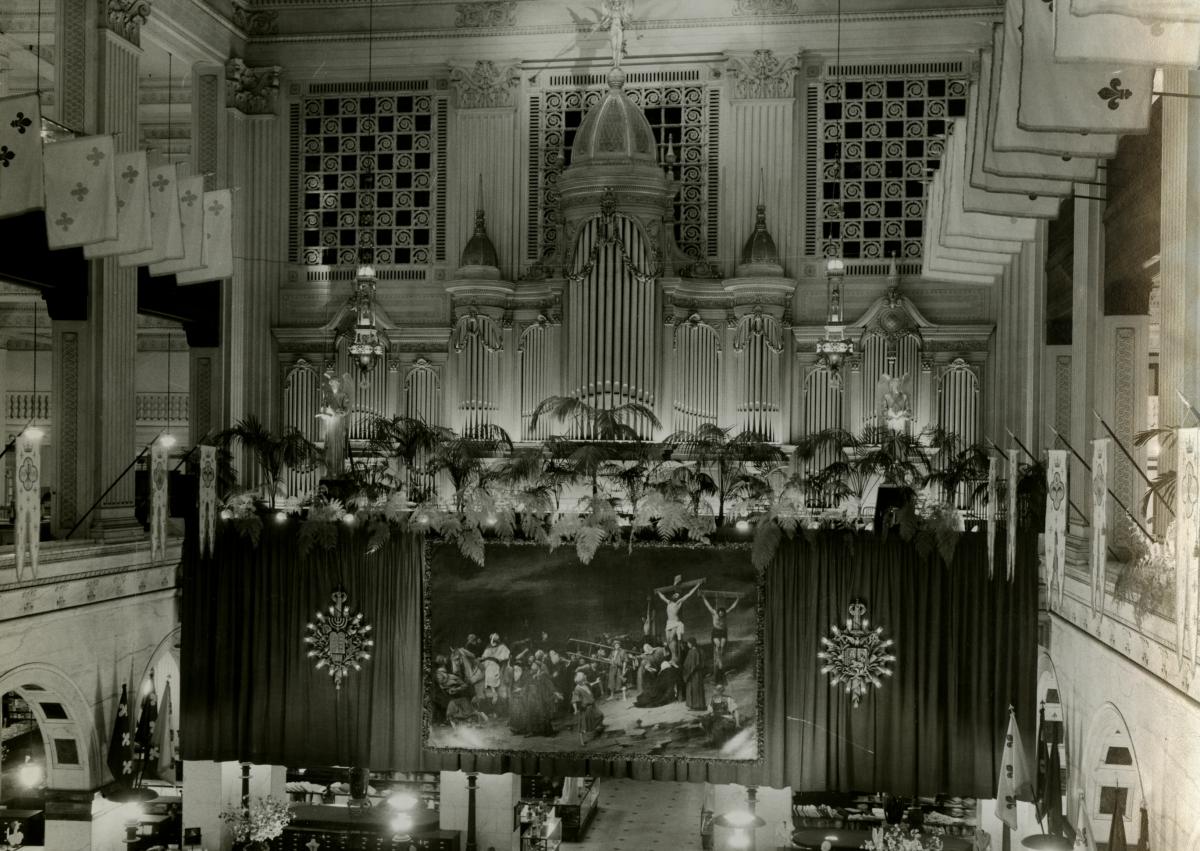
View of the Wanamaker Building’s famous organ during the Christmas season. A large painting of the crucifixion of Jesus Christ hangs in front of the organ. Photograph. Undated. John Wanamaker collection. Historical Society of Pennsylvania.

